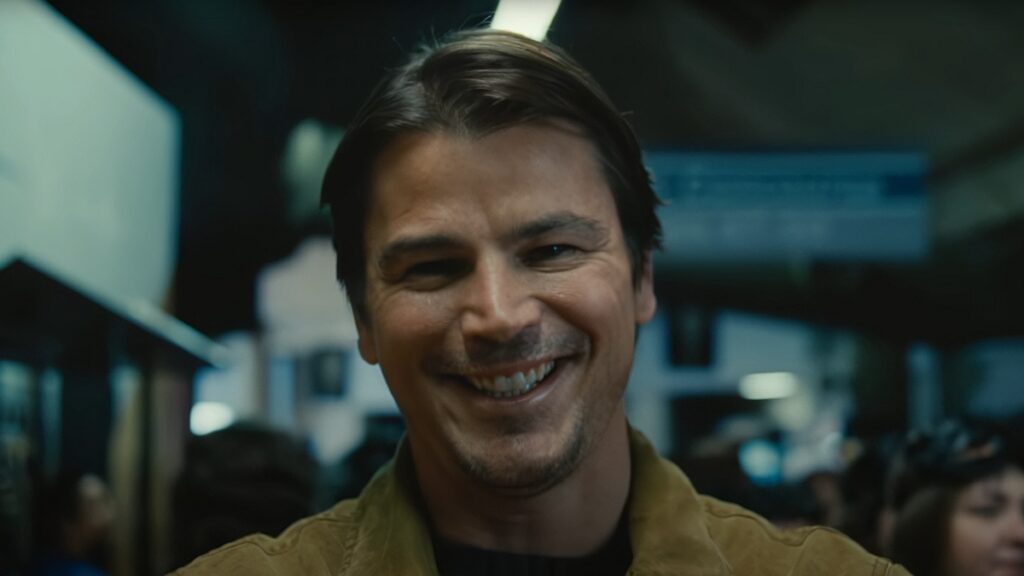
M. Night Shyamalan fancies himself a philosopher as well as a showman. Sure, he makes genre movies designed to rattle your nerves, but he also wants to dig under your skin and force you to wrestle with his pet themes and ideas. The Sixth Sense, The Village, and Old are all spellbinding constructions, embroidered with aesthetic flair and clockwork precision, but they’re also treatises on the fragility of parenthood—the quixotic dream of just keeping your kids safe. With his prior feature, the well-intentioned but unsatisfying Knock at the Cabin, Shyamalan skewed the balance too far toward the intellectual, building a meditative puzzle about humanity and faith but neglecting to supply the requisite thrills. His follow-up, Trap, tilts decidedly in the opposite direction. It is not among his most thought-provoking works, but as a specimen of pure entertainment, it is what the kids call a banger.
One of those kids is Riley (Ariel Donoghue), an obsessive fan of beloved girl-pop star Lady Raven (Saleka Night Shyamalan, the director’s daughter). Riley is elated that her father, Cooper (a never-better Josh Hartnett), has rewarded her academic excellence by taking her to a Lady Raven matinee show in downtown Philadelphia. For his part, Cooper seems happy to be there, basking in his daughter’s ebullience, even as he can’t help but notice the arena’s curiously robust police presence…
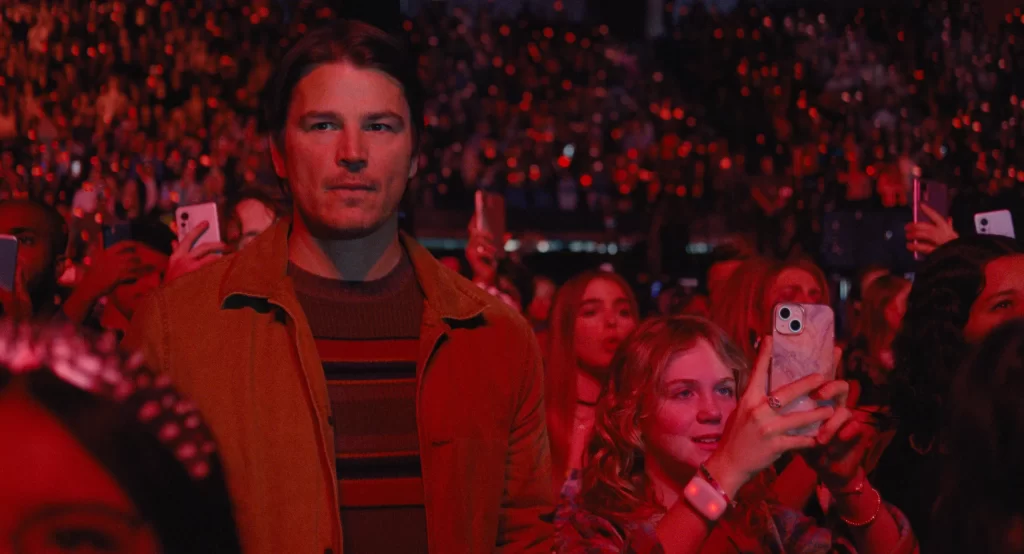
As with most Shyamalan pictures, it’s best to enter Trap as cold as possible, the better to appreciate the kinks and coils of its serpentine narrative. With that obligatory spoiler warning supplied, there’s no avoiding the movie’s central conceit: Cooper, in addition to being a smiling dad fond of playful, slightly cringeworthy banter—when Riley informs him that “crispy” is slang for “good,” he muses that “extra-fried” must be an even more enthusiastic compliment—is also a serial killer, branded by the press with the generic moniker The Butcher. And the FBI, having obtained solid intelligence that the Butcher will be attending this particular Lady Raven performance, has decided to spring an ambush, tightening its surveillance net and ensuring that its quarry can’t escape without falling into its clutches. In another words, as a merchandising hawker (Jonathan Langdon) discreetly informs Cooper in an expository monologue that’s already turning into a meme: “This entire concert is a trap.”
Reading that summary, you may find yourself asking questions. How can the feds capture the Butcher when they don’t know his name and have conflicting descriptions of his appearance? Even with the sting led by an ingenious profiler (Hayley Mills, and props to the Twitterers who pointed out that her breakout role came over 60 years ago in, wait for it, The Parent Trap), how can they possibly detain and interrogate all 3,000 men in attendance with any semblance of logistical cohesion? If Cooper is questioned, could he not just activate the folksy component of his personality and lie his way out of trouble? And if cops are going to give arena employees a secret password for accessing secure areas, couldn’t they have picked something less banal than “Hamilton”?

In terms of realism, these questions might seem valid; as a matter of movie logic, they are pointless. The very premise of Trap requires you to simply accept that Cooper can’t risk walking past a police officer on his way out the door, and that he must instead devise a surreptitious exit strategy. Shyamalan’s great achievement is that his filmmaking is so fluid, so absorbing, that it overpowers any protests in the name of rationality. He makes suspension of disbelief less an option than a guarantee.
One of the pleasures of Trap is how it weaponizes preconceived expectations of Shyamalan’s work against its audience. Justified or not (mostly not), the director’s name will forever be associated with the careening twists that concluded The Sixth Sense, Unbreakable, and The Village. This means that viewers are primed to anticipate rug-pulls, but while Trap does deliver a few third-act revelations, it discloses most of its key information in its opening reel. The big surprise is that there isn’t one.
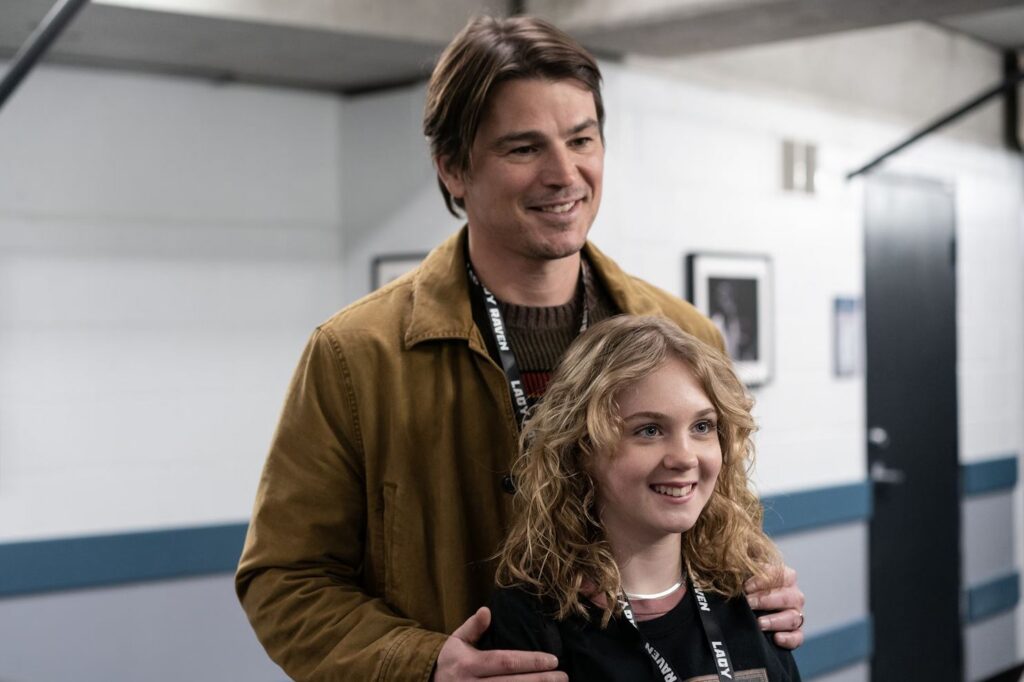
This doesn’t mean the movie is predictable. To the contrary, Shyamalan uses his silky craftsmanship to maximize the cascading excitement of his straightforward setup. Where Knock at the Cabin’s home-invasion thriller reduced to a frustrating binary—are these apparent lunatics actually telling the truth, or not?—Trap’s simple concept—just how is this sociopath going to get out of here?—creates a bonanza of possibility. We gradually learn quite a bit about Cooper—his abusive childhood, his obsessive-compulsive disorder (there’s a great throwaway shot where he adjusts a towel on a rack), his unnerving ability to partition his normal home life from his gruesome wet work—but above all he’s a smart guy confronted with a seemingly unsolvable problem. The steps that he takes to extricate himself from his predicament—swiping a keycard and police radio, causing a minor explosion at a fast-food stand, even nudging an unsteady woman down a flight of stairs—reveal both the depths of his desperation and the measure of his intellect and resolve.
Shyamalan is often accused of writing clunky dialogue, but here he wisely doesn’t try to verbalize the inner monologue of a protagonist who serves as the film’s villain as well as its point-of-view character. Instead, in addition to his typically fastidious framing and gliding camerawork (the cinematographer is Sayombhu Mukdeeprom, who also shot the ravishing Challengers), he deploys a bold visual grammar that brings viewers inside Cooper’s headspace. Largely eschewing standard over-the-shoulder shots, he often shoots conversations in extreme close-up, as though the actors are speaking directly to the camera, accentuating their features. At times, he shoves Cooper to the far-right of the frame so that only half of his face is visible, suggesting that this duplicitous figure hides 50% of himself from public view. He even tosses in a killer split diopter shot—the FBI profiler in the foreground scanning the crowd, while Cooper lurks behind her, avoiding detection.
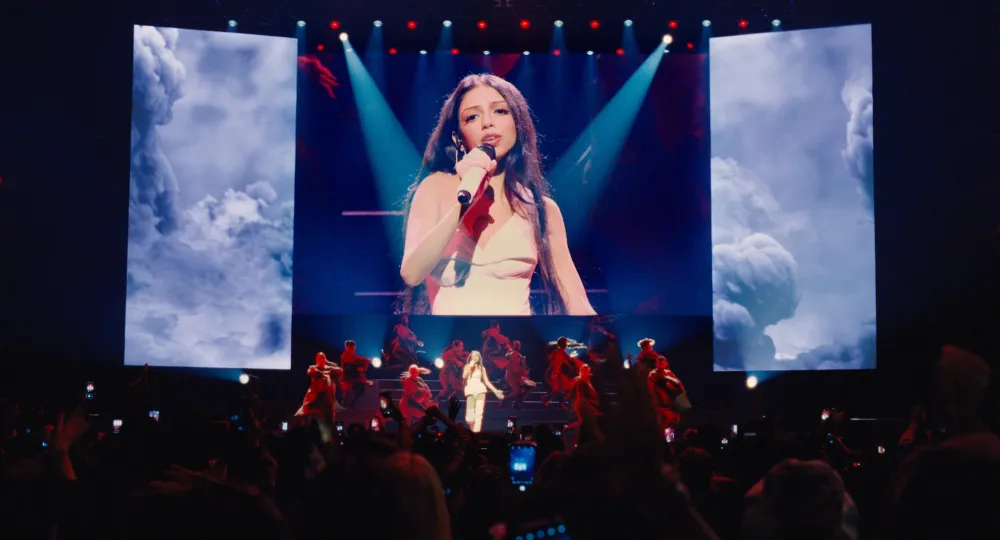
None of this would work without Hartnett’s eerily committed performance. Unlike James McAvoy’s baddie in Split (and the underrated Glass), Cooper’s psyche doesn’t house warring personalities; rather, he’s entirely aware of his secret identity, and how he can wield his aw-shucks charm to help conceal it. Hartnett, a failed heartthrob who’s been reinventing himself as a reliable character actor in movies like Oppenheimer and Wrath of Man, seems to have equipped himself with a spooky on-off switch, toggling between cheerful and lethal yet always occupying the same twisted soul. He works in concert (sorry!) with his director, lending those close-ups—in which he seamlessly tweaks the breadth of his smile, the glint in his eye—a primal intensity that’s both fascinating and disturbing.
“I think you’re looking for me,” Cooper purrs to Lady Raven, after he’s used his wiles to finagle his way backstage in the hope of finding a gap in the arena’s security. Yet even as that calmly chilling remark kicks off a tête-à-tête of riveting suspense, it also initiates the movie’s transition into a different register and location. Perhaps convinced that he couldn’t sustain Trap’s “What if Silence of the Lambs but at a Taylor Swift concert?” tension for the length of a feature, Shyamalan shifts the action from the thronging cacophony of the music hall to the soothing placidity of the suburbs, where we meet Cooper’s wife (Alison Pill, nicely cast), and where Cooper and Lady Raven engage in an extended war of wits and wills.
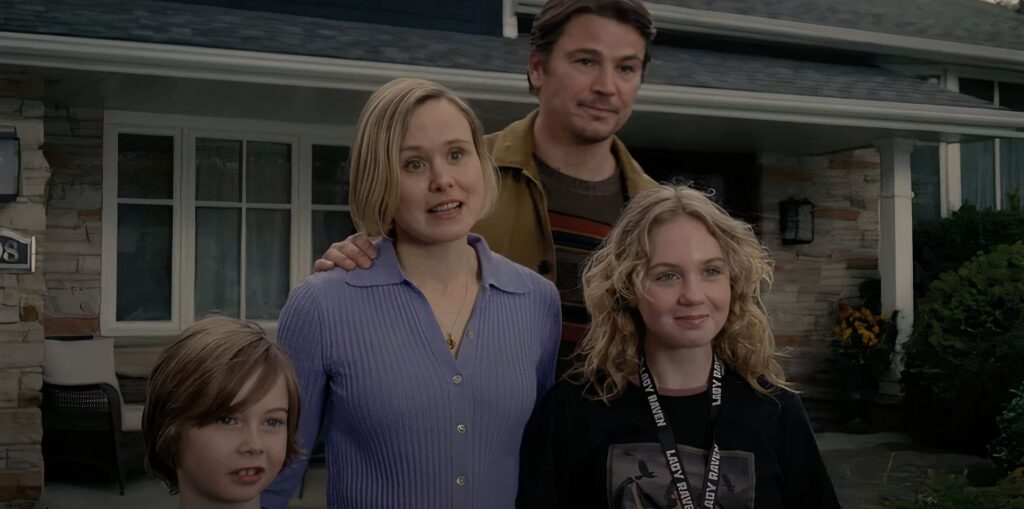
These sequences are executed with competence; in particular, the scene where Lady Raven locks herself in a bathroom and then wonders in horror about what might be happening on the other side of the door is a masterstroke of uncertainty. They are also somewhat repetitive, trafficking in a familiar pattern of flight and recapture that grows tedious, and whose mundanity brings the film’s lapses in logic to the fore. Shyamalan is an undeniably distinctive director, but where his best pictures carry a certain signature—the bravura flair of Split and Old, the rapt unease of Unbreakable and Signs, the mournful inevitability of The Sixth Sense, the monstrous beauty of The Village—these passages lack an identifying mark.
Until, that is, the movie’s hushed climax, which redeems its plotty hijinks and perfectly harmonizes Shyamalan’s crowd-pleasing instincts with his humanistic ruminations. Rather than spoil the details, I’ll just say that it’s the most gripping depiction of a screen character eating pie since Rooney Mara in A Ghost Story, and it’s also the moment where Hartnett’s performance pivots from playfully unsettling to truly scary.
Yet the primary sensation of Trap isn’t fear, but joy. There’s a wonderfully goofy bit during Lady Raven’s concert where she picks a random fan to join her on stage as her “dreamer girl”; as fate, contrivance, and Cooper’s quick thinking (plus the customary Shyamalan cameo) would have it, that fan just happens to be Riley. Like everything else in the movie, their ensuing duet isn’t especially plausible (to be fair, Saleka Shyamalan wrote the songs for the film and delivers a credible impersonation of a teen-pop celebrity), but what really matters is Cooper’s reaction: He watches from the wings, beaming with paternal pride, and the smile that plays across his face seems entirely genuine, as though he’s briefly forgotten that he’s a serial killer at all. That’s M. Night Shyamalan for you. He may not always have his head screwed on straight, but he sure knows how to put on a show.
Grade: B+
Jeremy Beck is the editor-in-chief of MovieManifesto. He watches more movies and television than he probably should.
